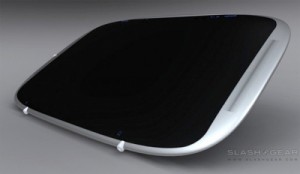
The eInk-LCD hybrid display screen from Pixel Qi will be on display at the upcoming CES event and everyone’s really interested to see it in person. But before it goes up on display, many units of it would probably have been shipped to India for use on a new tablet device called Adam.
Pixel Qi’s hybrid screen gives us what we have been wanting for some time now — the battery life of an eInk display (the one used on the Kindle and other ebook readers) and the usability of an LCD screen. And it gives us the advantages of both in the most literal way possible by combining the two. I my opinion it doesn’t exactly solve everything because it doesn’t look as good as an LCD screen and probably isn’t as easy to read under direct sunlight. But it is still a usable compromise.
So this tablet device called Adam, is currently being developed by an Indian company called Notion Ink. This is most likely the only such start up from that entire continent to have shown up on the radar of the international tech community. While the tablet device is not meant to be only an eBook reader, it is certainly going to capable of doing that. It is basically a Tegra based smartpad that will be targeted at low-cost computing on the go for the Indian masses.
But it is actually very relevant for the eBook reader market because it will become the first device to demonstrate in a rigorous real life scenario whether or not the display technology will hold. The eBook market is pretty demanding when it comes to battery life and readability. They have been spoiled on the eInk and even thought it has pathetically slow frame rates, the extremely low power consumption and the high degree of readability has made it quite popular. But backlight is missing, so is color and video. So newer technology is immediately required.